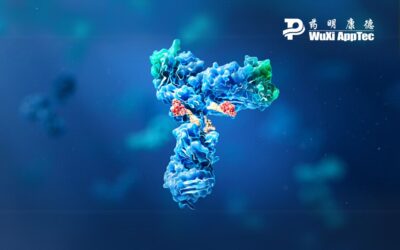Recent guidance from the U.S. Food and Drug Administration (FDA) on Safety Testing of Drug Metabolites helps drug developers know when and how to identify and characterize drug metabolites. Identifying and characterizing a drug’s metabolic profile is a necessary step in any preclinical program to assess safety and move to the next development stage. By implementing the insights provided by this guidance, drug developers can better inform the drug’s toxicity evaluation.
In an industry-wide push for regulatory harmonization, the newest U.S. FDA Revision 2 on Safety Testing of Drug Metabolites guidance closely aligns with the ICH M3(R2) ‘Guidance of Nonclinical Safety Studies for the Conduct of Human Clinical Trials and Marketing Authorization for Pharmaceuticals.’ Harmonization efforts can help consolidate testing and provide clarity on essential endpoints for laboratories and developers alike.
Representing Reality Through Creative Means
The new U.S. FDA guidance introduces “disproportionate drug metabolites,” defining them as “metabolites identified only in humans or present at higher plasma concentrations in humans than in any of the animal species used during standard nonclinical toxicology testing.” Since some metabolites may affect humans in ways not represented by testing systems, the guidance opens the door to determine metabolite toxicity during the preclinical safety assessment.
The guidance states that sponsors can consider two general approaches to assess the drug metabolite effect:
- The first approach is to identify an animal species that routinely form the metabolite at levels equivalent to or greater than the human exposure and investigate the drug’s toxicity in that species.
- The second approach, if the first approach is not possible, is to synthesize the metabolite and directly administer it to the test system for further safety evaluation. The U.S. FDA acknowledges the difficulties of synthesizing a specific metabolite and the complexities of direct administration. Still, guidance reaffirms the importance of identifying and evaluating the drug metabolite’s potential toxicity to ensure clinical safety.
Determining which approach to take typically falls onto the team executing the evaluation, but figuring out how it impacts final test results and how to leverage them in future testing stages can be challenging.
What to Do in DMPK Given the Results
Safety testing drug metabolites is critical to assessing human risk before a drug progresses to large clinical trials. During phase I, typically, safety testing of drug metabolites is not known. It is critical to assess the human risk before the drug progresses into later stage clinical trials.
Because this testing is integral to the overall development process, companies should know when, how and why metabolite testing occurs. Consider the following information to better leverage the insights provided in the preclinical phase:
- In early drug development stages, in vivo metabolism study results in nonclinical test species should be available to identify and characterize such metabolites effectively. Leverage these to confirm the results obtained from in vitro studies or reveal quantitative or qualitative differences in metabolism across species.
- Conduct radiolabeled human absorption, metabolism and excretion (AME) studies as early as possible instead of waiting until later in the development process. These results may reveal critical data, like disproportionate drug metabolites, which can cause delays if detected in a late development phase.
- Identify a partner that curates pathways leveraging the latest guidance to improve efficiency and effectiveness. Partners equipped to support metabolite safety testing from preclinical through clinical phases can provide an integrated program and reduce communication errors that may occur when transferring laboratories.
Regulatory guidance is in constant flux worldwide, making it challenging to stay updated on standards that affect your compound throughout the entire drug development process. Ensure your partners are up to date on the latest guidance and can support your program from the first tests to regulatory submission.
Learn more about WuXi AppTec’s DMPK services or talk to one of our experts by contacting us today.
As a global company with operations across Asia, Europe, and North America, WuXi AppTec provides a broad portfolio of R&D and manufacturing services that enable the global pharmaceutical and life sciences industry to advance discoveries and deliver groundbreaking treatments to patients. Through its unique business models, WuXi AppTec’s integrated, end-to-end services include chemistry drug CRDMO (Contract Research, Development and Manufacturing Organization), biology discovery, preclinical testing and clinical research services, helping customers improve the productivity of advancing healthcare products through cost-effective and efficient solutions. WuXi AppTec received an AA ESG rating from MSCI for the fourth consecutive year in 2024 and its open-access platform is enabling around 6,000 customers from over 30 countries to improve the health of those in need – and to realize the vision that “every drug can be made and every disease can be treated.”


